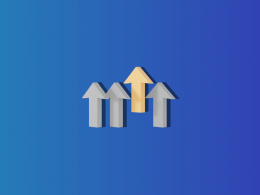QuickBooks, initially designed to cater to the needs of small to medium-sized businesses, has evolved over the years, becoming increasingly adaptable and user-friendly.
Of late, there’s been a noticeable shift in how QuickBooks is perceived and utilized. No longer confined to the boundaries of business accounting, QuickBooks is increasingly being adopted for personal use. This trend highlights a growing realization among individuals that the principles of business finance management can be effectively applied to personal finances too. With its comprehensive features, QuickBooks provides an exceptional platform for managing home budgets, tracking expenses, overseeing investments, and planning for taxes.
This article delves into the potential of QuickBooks as a tool for personal finance management. We will explore how the software can be adapted for personal use, highlighting its features and functionalities that are particularly beneficial for managing personal finances.
If you’re a business owner looking for a smarter way to manage your business finances, check out Synder. Experience effortless reconciliation and synchronization of your sales and expenses across multiple platforms. Join the community of successful small business owners who are streamlining their accounting with Synder. Sign up now for a free trial and take the first step towards simplified, efficient financial management!
Setting up QuickBooks Online for personal use
Utilizing QuickBooks for personal finances requires a tailored approach to setup and customization, mindful of overcoming common problems with QuickBooks. Here’s a step-by-step guide to get started, along with tips for optimizing the software for personal financial tracking.
Create a new QuickBooks Online account
Visit the QuickBooks website and select a suitable version. QuickBooks Online is often recommended for its cloud-based accessibility. Sign up for an account. You may choose a plan based on your needs, but the basic version usually suffices for personal use. Upon logging in, choose the option to set up a new company, naming it appropriately for personal finance management.
Customize your Chart of Accounts
Customize the Chart of Accounts to reflect personal finance categories. This includes modifying existing accounts and creating new ones for expenses like groceries, utilities, mortgage or rent, and other personal expenditures. Consider setting up accounts for savings goals, emergency funds, or specific investments.
Customize the interface
Tailor the dashboard view to highlight key information such as recent transactions, budget summaries, and upcoming bills. Use QuickBooks’ settings to adjust the display and reporting features to better suit personal finance management.
Integrate bank and credit card accounts
Link your bank and credit card accounts to QuickBooks for real-time transaction updates. This simplifies the process of tracking expenses and income. Ensure secure login credentials and verify connections to maintain the security of your financial data.
Set up budgets and financial goals
Utilize QuickBooks’ budgeting tools to create monthly or annual budgets. Input expected income and set limits for different categories of expenses. You can track your progress towards financial goals directly within the software, adjusting as necessary.
Regular maintenance and data reconciliation
Regularly update and reconcile your accounts to ensure accuracy. This includes categorizing transactions and reviewing for any discrepancies. Use the reporting feature to assess financial health periodically and make adjustments to your budgeting and spending habits.
Additional tips for personal use of QuickBooks
To maximize the benefits of QuickBooks for personal finances it is good to keep in mind the following points:
- Keep it simple: Avoid overcomplicating the setup. Start with basic categories and features, and gradually incorporate more complex functions as you become more comfortable.
- Utilize mobile apps: Leverage QuickBooks’ mobile apps for on-the-go tracking and receipt capture.
- Explore integrations: Investigate additional integrations with other apps and services that can further streamline your personal finance management.
- Security first: Always prioritize security. Use strong, unique passwords and two-factor authentication.
Now that you’ve set up your QuickBooks account for personal use, in subsequent sections, we will look closely at the key areas of financial management from budgeting to debt management.
Can I use QuickBooks for free?
QuickBooks does not offer a completely free version, but you can explore its features through a 30-day free trial of QuickBooks Online. Additionally, students and educators might access QuickBooks for free through Intuit’s Education Program.
Budgeting and expense tracking with Quickbooks for personal finances
QuickBooks, primarily known for its business finance capabilities, also offers robust tools for budgeting and expense tracking that can be effectively utilized for personal finance management. Here’s how to create and manage budgets, track and categorize personal expenses, and set financial goals in QuickBooks.
Creating and managing budgets for personal finances
While many of the features are available with a regular QuickBooks Online subscription (i.e. Simple Start), budgeting can be done only if you have QuickBooks Online Plus or QuickBooks Online Advanced plans. To create your budget, you can follow these steps:
- Step 1: Accessing the budgeting tool: Navigate to the budgeting feature in QuickBooks Online. Head to Settings and select Budgeting.
- Step 2: Setting up a new budget: Select Add Budget and specify the fiscal year. Choose whether the budget will be for profit and loss or for balance sheet accounts.
- Step 3: Defining budget details: Input your expected income and expenses for each category. You can base these on your past spending or plan for future goals. QuickBooks allows you to enter monthly, quarterly, or annual amounts.
- Step 4: Reviewing and adjusting: Regularly review and adjust your budget as needed. This is crucial for adapting to changes in income or expenses.

Tracking and categorizing personal expenses
When you incur expenses, promptly record them in QuickBooks and take advantage of the connected bank and credit card accounts to automate transaction feeds. Each transaction should be assigned to an appropriate category, and you can create custom categories for personal expenses such as groceries, healthcare, or entertainment to enable more accurate tracking.
Furthermore, make use of QuickBooks’ reporting tools to analyze your spending patterns, providing valuable insights that can assist in making informed decisions about future spending and necessary budget adjustments.
Managing insurance for personal finances
QuickBooks can be a useful tool for managing insurance-related finances, including home insurance. Here’s how you can use QuickBooks for this purpose.
Recording insurance premiums
Create a specific account in QuickBooks dedicated to insurance payments. This can be categorized under expenses. Each time you pay your insurance premium, record the transaction in this account. Include details like the date, amount, and the insurance policy number for reference.
Tracking premium changes
Use QuickBooks to keep track of any changes in your insurance premiums. This is particularly useful for budgeting purposes if your premiums fluctuate annually or bi-annually. By recording these payments consistently, you can compare insurance costs across different years, which can help in financial planning and negotiating with insurance providers.
Budgeting for insurance costs
In your budgeting within QuickBooks, allocate the necessary funds for your insurance premiums. This ensures that you have a clear understanding of how these costs fit into your overall financial plan. If you anticipate premium increases (due to factors like policy changes or claims history), you can adjust your future budgets accordingly in QuickBooks.
Setting reminders for premium payments
Set up reminders in QuickBooks for upcoming insurance premium payments so that payments are made on time, avoiding late fees or policy lapses. Similarly, set reminders for policy renewals, giving you time to review your policy and make any necessary changes.
Analyzing insurance expenditures
Use QuickBooks’ reporting features to generate reports on your insurance expenses. This can provide insights into how much of your budget is allocated to insurance and how it changes over time. Analyze these reports to make informed decisions, such as whether to shop for a more cost-effective policy or adjust coverage levels.
Document management
QuickBooks allows you to attach documents to transactions. You can attach your insurance policy documents to the relevant premium payments for easy access and reference.
Setting and monitoring financial goals
In QuickBooks, begin by setting specific financial goals, whether it’s saving for a vacation, paying off debt, or building an emergency fund. To track your progress towards these goals, utilize budget reports and expense tracking tools available in QuickBooks. The software offers visual representations such as graphs and charts, making it easy to gauge your proximity to achieving your financial targets. Remember, just like budgets, it’s important to be flexible and ready to adjust your goals in response to any changes in your financial situation or priorities.
Tips for effective budgeting and expense tracking
To help with your budgeting and expense tracking, consider the following key strategies:
- Be realistic: Set achievable budgets and goals based on your actual income and spending habits.
- Make regular updates: Consistently update your transactions and review your budget to keep everything current.
- Leverage alerts: Set up alerts for when you approach or exceed budget limits in certain categories.
- Take advantage of reporting: Use QuickBooks’ reporting features for in-depth analysis of your financial health and to make informed decisions.
How to use QuickBooks for personal income management
Effectively managing income is a crucial aspect of personal finance. QuickBooks, with its comprehensive set of tools, facilitates efficient recording, management, and analysis of various income sources. Let’s review how you can leverage QuickBooks for effective income management.
Recording and managing different sources of personal income
Begin by identifying all your income sources, which could include salary, freelance income, investment returns, rental income, or other sources. To streamline this process, consider the Import Excel to QuickBooks feature, which allows you to efficiently bring in detailed income data from various sources into QuickBooks. Once imported, set up separate accounts for each income source in the Chart of Accounts section, enhancing your tracking and management capabilities. As you receive income, make sure to record it in the corresponding account in QuickBooks, accurately categorizing the income to reflect its source.
Using QuickBooks for tax preparation and planning
QuickBooks streamlines tax organization by allowing you to tag transactions that are tax-related, simplifying the identification of deductions and taxable income. You can generate tax reports in QuickBooks that summarize your taxable income and potential deductions, which are crucial for planning your tax payments and preparing your tax returns. Additionally, the data in QuickBooks can be easily shared with accountants or tax advisors, making it a valuable tool for informed tax planning and filing.
Generating income reports and analyzing trends in your home finances
QuickBooks facilitates the creation of custom reports, which can be used to gain insights into your income patterns over time. By utilizing these reports, you can analyze trends such as seasonal variations in income or the growth of different income streams. The insights garnered from these reports are invaluable in guiding financial decisions, enabling you to adjust budgets, plan for investments, or alter savings strategies effectively.
Tips for effective income management and financial planning in QuickBooks
Managing income in QuickBooks not only provides a clear picture of your financial health but also aids in strategic financial planning and decision-making. Here are some best practices that can help you optimize personal income management:
- Regular income tracking: Consistently update income transactions in QuickBooks for accurate tracking and reporting.
- Use class and location tracking: For more detailed income management, utilize the class and location tracking features in QuickBooks.
- Automate recurring income entries: For regular income sources like salaries or rental income, set up recurring transactions in QuickBooks for efficiency.
- Review regularly: Regularly review your income accounts and reports to stay informed about your financial status and to make timely adjustments to your financial plan.
Investment tracking
Incorporating investment tracking into your personal finance management can provide a comprehensive view of your financial health. We will now look into how you can use QuickBooks for investment tracking.
Capabilities of QuickBooks in tracking investments
In QuickBooks, start by setting up separate accounts for different types of investments, including stocks, bonds, mutual funds, or real estate. This organization allows you to record various investment transactions such as buys, sells, dividends, and interest income within these specific accounts.
Although QuickBooks may not provide complex investment performance metrics like internal rate of return (IRR), it is still quite effective in helping you track the overall value of your investments and the income they generate, giving you a clear overview of your investment portfolio’s performance.
Connecting investment accounts and monitoring performance
You can enhance your investment tracking in QuickBooks by linking any investment accounts that support integration, allowing for automatic updates of transactions and balances. For investment accounts that do not offer this integration, it’s important to manually enter your investment transactions into QuickBooks. Consistently updating these entries is crucial for maintaining accurate tracking of your investments.
Additionally, regularly generate and review investment reports within QuickBooks. These reports provide valuable insights into your investment balances and income over time, helping you assess the growth and performance of your investments.
Understanding the tax implications of investments with QuickBooks
In QuickBooks, ensure that you tag investment transactions with tax implications, like capital gains or qualified dividends, to efficiently record tax-related activities. Utilize QuickBooks’ capability to generate detailed tax reports that summarize your taxable investment income and outline any potential capital gains or losses, a feature that proves particularly useful for both tax planning and filing purposes.
However, for more complex investment tax matters, it’s always recommended to consult with a tax professional. This helps ensure that your investment’s tax treatment is accurate and compliant with current tax laws, providing an extra layer of assurance in your financial management.
If you want to know how Canadian taxes work read the expert guide to GST/HST for foreign visitors and businesses.
Tips for effective investment tracking in QuickBooks
Managing the tax aspects of your investments can be streamlined with some tips:
- Stay organized: Keep your investment accounts and transactions well-organized in QuickBooks for easier tracking and analysis.
- Regular updates: Consistently update your investment transactions, especially if you are doing it manually, to maintain an accurate picture of your investment portfolio.
- Utilize custom categories: Create custom categories for different types of investment income (e.g., dividends, interest) for more detailed tracking and reporting.
- Understand limitations: Recognize the limitations of QuickBooks in investment tracking, especially for complex investment analysis, and consider supplementing with specialized investment tracking tools if necessary.
Debt and loan management
Managing debts and loans efficiently is crucial for maintaining a healthy financial status. We will now explore how can you manage personal debts and loans, including mortgages, student loans, and other liabilities using QuickBooks.
Strategies for managing debts and loans using QuickBooks
Begin managing your debts and loans in QuickBooks by creating liability accounts for each type, such as a mortgage, student loan, car loan, or credit card debt. When setting up these accounts, enter the initial loan amount as the opening balance and be sure to include details like loan terms, interest rate, and repayment schedule.
It’s important to regularly record each payment you make in QuickBooks, breaking down the payment into its principal and interest components. This practice aids in accurately tracking the outstanding balance of the loan and the amount of interest being paid over time.
Tracking mortgage, student loans, and other liabilities
You can set up an amortization schedule in QuickBooks which allows you to track the reduction in principal and the interest paid throughout the mortgage’s life. Apply a similar approach to student loans, recording regular payments and keeping tabs on the outstanding balance.
For other debts like credit cards or personal loans, ensure that you regularly update the payments in QuickBooks and consistently monitor the outstanding balances to maintain a clear picture of your overall debt situation.
Analyzing debt repayment plans and interest impact
Utilize QuickBooks to evaluate various repayment plans by experimenting with scenarios like increasing your payment amounts or frequency; this can provide insights into how these changes affect your loan payoff date and the total interest paid.
Leverage the data in QuickBooks to develop strategic approaches for reducing your debts, such as focusing on paying off high-interest loans first or considering debt consolidation options.
Tips for effective debt and loan management in QuickBooks
When you use QuickBooks for personal debt and loan management, it’s good to keep the following points in mind:
- Stay consistent: Consistently record all payments to keep your debt information up-to-date.
- Regular reviews: Periodically review your debt accounts to assess progress and make adjustments to your repayment strategies.
- Leverage reports: Generate reports in QuickBooks to visualize your debt reduction over time and to understand the impact of your current repayment plan.
- Seek professional advice: For complex debt situations, consider consulting with a financial advisor for tailored advice and strategies.
If you want to learn how to write off bad debt in QuickBooks, read our comprehensive guide on writing off bad debts.
Reporting and analytics for personal financial management
A critical aspect of personal finance management is the ability to analyze financial data and make informed decisions. QuickBooks offers a range of reporting features that can be tailored for personal finance analysis. Here’s how you can use QuickBooks’ reporting and analytics capabilities for a better understanding of your financial situation.
Overview of reporting features in QuickBooks
QuickBooks offers a range of standard reports, including Profit and Loss, Balance Sheet, and Cash Flow statements, which are also valuable for personal finance management. It provides detailed transaction reports that deliver insights into specific types of transactions, such as expenses, income, and investments.
The software includes budgeting and forecasting reports that compare actual financial performance against budgeted amounts, a crucial feature for effectively tracking and managing financial goals.
Customizing reports for personal finance analysis
In QuickBooks, you can personalize standard reports to align with your personal finance requirements by modifying date ranges, filtering for specific accounts, or categorizing expenses in a way that suits your needs.
The software also empowers you to create custom reports from scratch, offering the flexibility to concentrate on the financial information most crucial to you. Once you’ve created a custom report, save it within QuickBooks to facilitate easy access and enable regular monitoring of your financial health.
Utilizing data for informed financial decision-making
Utilize QuickBooks’ reporting capabilities to analyze your spending habits and identify trends, which can aid in making necessary adjustments to your budgets or spending behavior.
Regularly reviewing income reports is also crucial for understanding the stability or variability of your income streams over time. Additionally, generating reports to assess your investment performance enables you to make informed adjustments as needed.
Tips for maximizing the use of reports in QuickBooks
With QuickBooks’ comprehensive reporting and analytics tools, individuals can gain valuable insights into their financial health, enabling them to make more informed and strategic financial decisions. Here are some more tips that will help you with analyzing your personal finances:
- Regular review: Make it a habit to regularly review financial reports to stay updated on your financial status.
- Integrate reports into decision-making: Use the insights gained from reports to inform your financial decisions, such as adjusting budgets or reallocating investments.
- Leverage graphs and charts: Utilize QuickBooks’ graphical representations to get a quick and clear understanding of financial data.
- Stay informed: Keep learning about QuickBooks’ reporting features, as ongoing updates and new features can enhance your financial analysis capabilities.
Tips and tricks for maximizing QuickBooks for personal finance
Last but not least we will look into some tips and strategies that can help you get the best of QuickBooks for personal financial management.
Utilizing advanced features effectively
Make the most of QuickBooks’ Cash Flow Planner to project your future cash flow by analyzing past trends and upcoming expenses, which is instrumental in planning and preventing financial shortfalls.
Enhance your record-keeping by attaching relevant documents such as bills, receipts, or warranties directly to transactions, ensuring better organization and ease of retrieval.
Leverage the online banking integration feature in QuickBooks to automatically download transactions, a functionality that not only saves time but also significantly improves the accuracy of your financial records.
Automating tasks for efficient financial management
To streamline your financial management in QuickBooks, set up recurring transactions for regular expenses or income like mortgage payments or salary, which automates the entry process and saves time. Enhance this efficiency by creating bank rules that automatically categorize and match imported transactions, a feature that’s particularly beneficial for recurring expenses or deposits.
Utilize QuickBooks’ reminders and alerts system for upcoming bills, budget limits, or financial goals, ensuring you stay informed and on top of your finances without the need for constant manual monitoring.
Leveraging community resources and support
For continuous learning and mastering QuickBooks, take advantage of the extensive range of tutorials, webinars, and how-to guides offered through QuickBooks’ website or available from third-party providers.
Engage with the QuickBooks community by joining user forums and online communities, where you can find a wealth of tips, advice, and practical solutions from experienced users.
Make use of QuickBooks’ customer support whenever you encounter technical issues, have queries about specific features, or need guidance on using the software more effectively. These resources collectively offer comprehensive support for enhancing your QuickBooks experience.
Conclusion
The journey through the versatile world of QuickBooks reveals its remarkable adaptability beyond the confines of business accounting. For individuals seeking a robust and comprehensive tool for personal finance management, QuickBooks emerges as a surprising yet highly effective choice.
This article has traversed various facets of personal finance – from budgeting and expense tracking to income management, investment tracking, debt and loan management, and the utilization of advanced reporting and analytics. Each aspect demonstrates how QuickBooks’ business-oriented features can be skillfully adapted for personal financial oversight.
As we conclude, it is worth emphasizing the importance of exploring and customizing QuickBooks to fit individual financial situations. Each user’s financial journey is unique, and QuickBooks offers the flexibility to accommodate these diverse needs. Whether you are an individual looking to gain better control over your finances, or a freelancer navigating the intersection of personal and business finances, QuickBooks can be shaped to serve your specific goals.







.png)
